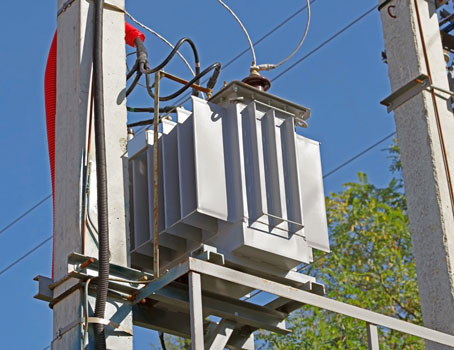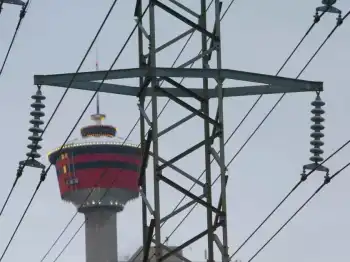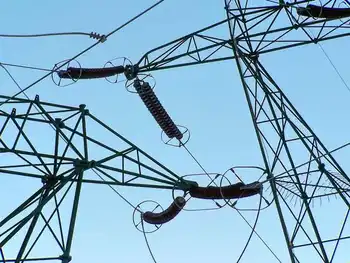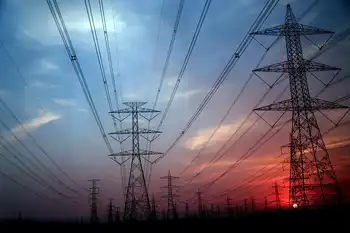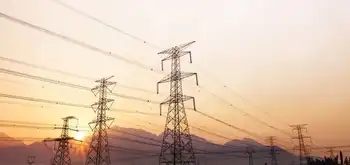The New England Clean Power Link Receives Presidential Permit
High Voltage Maintenance Training Online
Our customized live online or in‑person group training can be delivered to your staff at your location.

- Live Online
- 12 hours Instructor-led
- Group Training Available
New England Clean Power Link secures DOE Presidential Permit and ISO-New England approval for a 1,000 MW buried cross-border transmission line delivering clean hydropower to Vermont and New England, cutting emissions and lowering energy costs.
Key Points
A 154-mile 1,000 MW underwater and underground line linking Canada to New England to supply permitted low-carbon power.
✅ DOE Presidential Permit for cross-border interconnection
✅ ISO-New England I.3.9 confirms reliable grid connection
✅ 154-mile buried route via Lake Champlain to Ludlow, VT
BURLINGTON, VT (December 5, 2016) TDI New England (“TDI-NE”) announced today the United States Department of Energy (DOE) has issued a Presidential Permit for the New England Clean Power Link, a 1,000 MW buried electric transmission line that will connect New England with Eastern Canada, and, across Eastern Canada, projects such as the Maritime Link have recently delivered first power to strengthen regional ties. A Presidential Permit is required for the construction, operation and maintenance of electric facilities connecting at the international borders of the United States. Of the more than half dozen proposed transmission lines aimed at importing renewable electricity into the New England market, the New England Clean Power Link is the only project to have obtained all necessary siting permits.
In addition to the Presidential Permit, the project recently secured critical regulatory authorization from ISO-New England, which approved the project’s I.3.9 application, while other long-distance lines such as TransWest Express have advanced through separate federal reviews. An I.3.9 authorization confirms the New England Clean Power Link can reliably connect to the regional electric grid. To connect to the New England electric grid, all energy projects must obtain this approval from ISO-New England.
Vermont Governor Peter Shumlin stated, “The New England Clean Power Link is a well-designed, innovative transmission project that the Green Mountain State looks forward to hosting. The project will help reduce carbon emissions in our region, provide ratepayer benefits for Vermont, and will fund important Vermont-based programs, including support for our Clean Energy Development Fund and the cleanup of Lake Champlain.”
TDI CEO Donald Jessome said, “We are extremely pleased that the DOE has issued a Presidential Permit for the New England Clean Power Link and authorized a new cross-border interconnection with Canada. This interconnection is a vital link that will unleash low-carbon, cost-effective electricity from Canada for the benefit of New England, replacing fossil-fuel generators and lowering energy prices. We are particularly grateful for the cooperation from the federal agencies and the project’s host state of Vermont.”
Blackstone Senior Managing Director Sean Klimczak continued, “The New England Clean Power Link is a high potential project that we and our supply partners believe is well positioned to respond to the forthcoming Massachusetts clean-energy solicitation for 1,200 MW of base load hydropower and onshore wind. Blackstone is proud to support a project that will provide environmental and economic benefits to New England ratepayers for decades to come.”
For example, Canada is evaluating new hydro capacity such as the Meaford pumped storage project that could support future clean power supply.
Sandra Levine, senior attorney with the Conservation Law Foundation, said, “TDI-NE’s buried, transmission line in Vermont shows that the facilities needed to transport electricity can meet high environmental standards and be developed in a responsible, cooperative manner.”
Dave Alward, consul general of Canada in New England, stated recently: “Canada-New England clean-energy opportunities have never been stronger. We now need new cross-border clean-energy transmission projects. These projects will further strengthen our energy relationship, provide clean, affordable and reliable power to homes and businesses, and make real progress in our joint efforts to reduce emissions and address climate change.”
The DOE issued the Presidential Permit after receiving concurrence from the U.S. Departments of State and Defense, and after consulting with the U.S. Army Corps of Engineers, Fish and Wildlife Service, Coast Guard and Environmental Protection Agency, and by contrast, some cross-border lines like the Manitoba-Minnesota transmission line have faced delays in their regulatory proceedings.
The Vermont Public Service Board previously issued Section 248 and Section 231 permits for the project, and the Vermont Agency of Natural Resources and Army Corps of Engineers issued nine other permits confirming that the construction and operation of the Clean Power Link will be in compliance with Water Quality Standards and the federal Clean Water Act.
About the New England Clean Power Link
The New England Clean Power Link is a proposed 154-mile underwater and underground transmission line that will deliver 1,000 MW of clean, cost-effective power to the New England market. The line is being developed with private-sector financing by TDI-NE and will originate at the U.S.-Canadian border and travel approximately 97 miles underwater, akin to subsea installations such as the Maritime Link cable, down Lake Champlain to Benson, Vermont. The cable will then be buried along town and state road and railroad rights-of-way or on land controlled by TDI-NE for approximately 57 miles to a new converter station to be built in Ludlow, Vermont. The project is expected to be in service in 2020, at a cost of approximately $1.2 billion.






